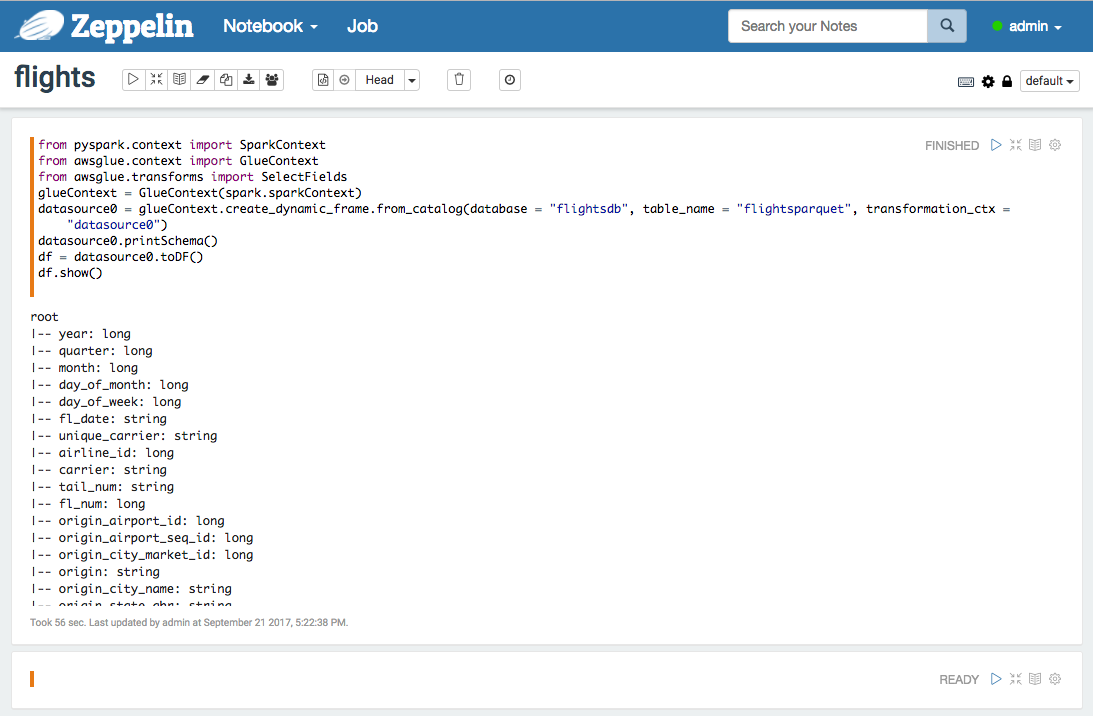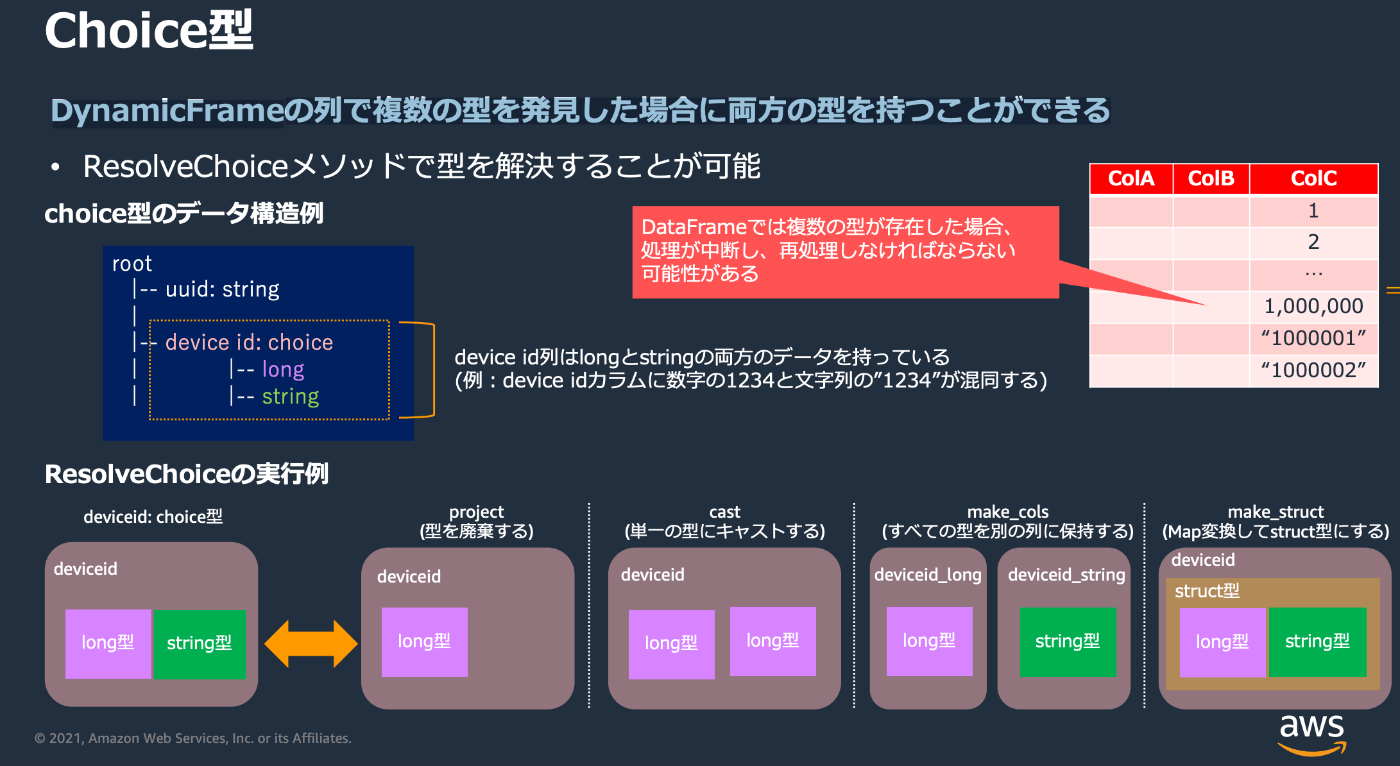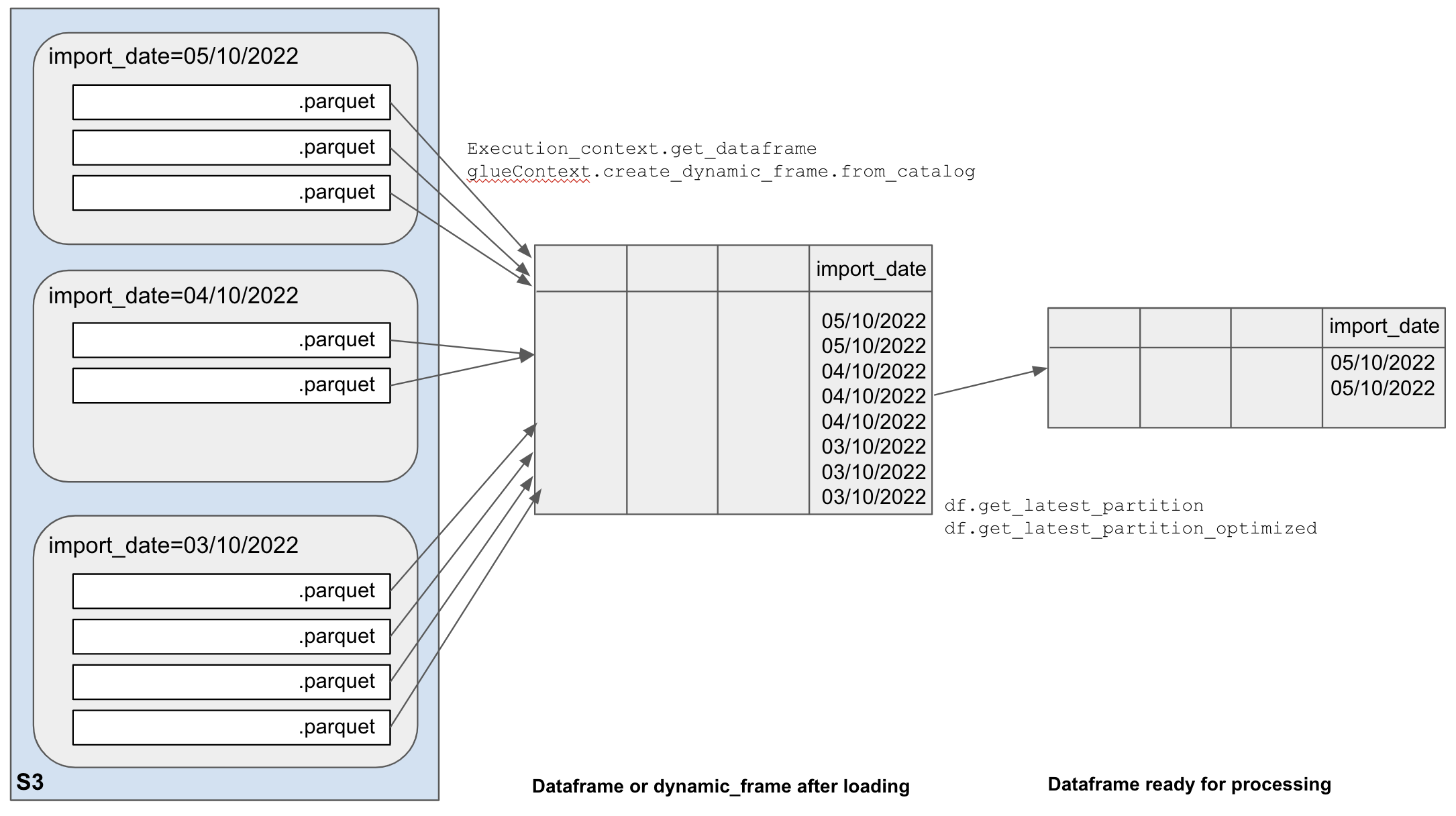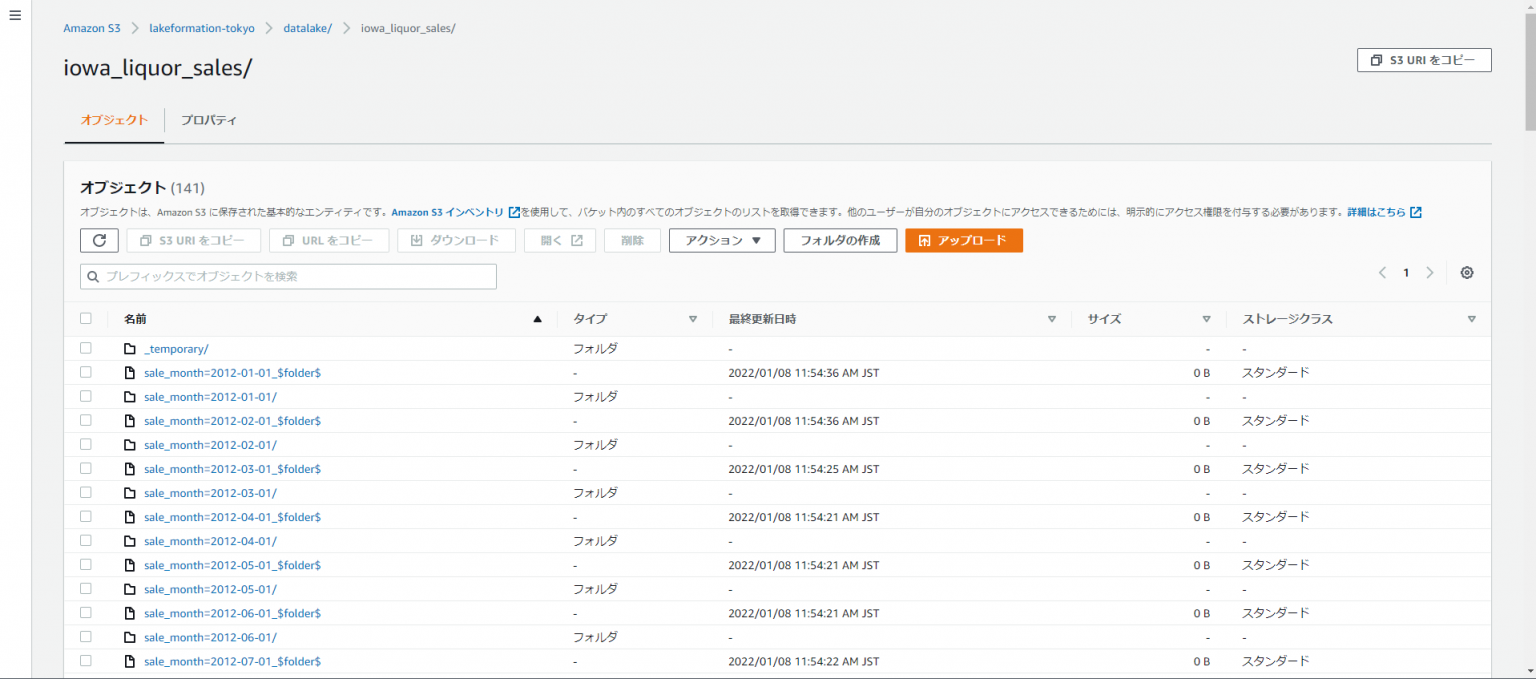Gluecontext.create_Dynamic_Frame.from_Catalog
Gluecontext.create_Dynamic_Frame.from_Catalog - Dynfr = gluecontext.create_dynamic_frame.from_catalog(database=test_db, table_name=test_table) dynfr is a dynamicframe, so if we want to work with spark code in. Either put the data in the root of where the table is pointing to or add additional_options =. We can create aws glue dynamic frame using data present in s3 or tables that exists in glue catalog. Use join to combine data from three dynamicframes from pyspark.context import sparkcontext from awsglue.context import gluecontext # create gluecontext sc =. Calling the create_dynamic_frame.from_catalog is supposed to return a dynamic frame that is created using a data catalog database and table provided. With three game modes (quick match, custom games, and single player) and rich customizations — including unlockable creative frames, special effects, and emotes — every. However, in this case it is likely. Node_name = gluecontext.create_dynamic_frame.from_catalog( database=default, table_name=my_table_name, transformation_ctx=ctx_name, connection_type=postgresql. From_catalog(frame, name_space, table_name, redshift_tmp_dir=, transformation_ctx=) writes a dynamicframe using the specified catalog database and table name. Because the partition information is stored in the data catalog, use the from_catalog api calls to include the partition columns in. Calling the create_dynamic_frame.from_catalog is supposed to return a dynamic frame that is created using a data catalog database and table provided. Use join to combine data from three dynamicframes from pyspark.context import sparkcontext from awsglue.context import gluecontext # create gluecontext sc =. From_catalog(frame, name_space, table_name, redshift_tmp_dir=, transformation_ctx=) writes a dynamicframe using the specified catalog database and table name. Now i need to use the same catalog timestreamcatalog when building a glue job. In your etl scripts, you can then filter on the partition columns. This document lists the options for improving the jdbc source query performance from aws glue dynamic frame by adding additional configuration parameters to the ‘from catalog’. In addition to that we can create dynamic frames using custom connections as well. Then create the dynamic frame using 'gluecontext.create_dynamic_frame.from_catalog' function and pass in bookmark keys in 'additional_options' param. Because the partition information is stored in the data catalog, use the from_catalog api calls to include the partition columns in. Dynfr = gluecontext.create_dynamic_frame.from_catalog(database=test_db, table_name=test_table) dynfr is a dynamicframe, so if we want to work with spark code in. Calling the create_dynamic_frame.from_catalog is supposed to return a dynamic frame that is created using a data catalog database and table provided. Create_dynamic_frame_from_catalog(database, table_name, redshift_tmp_dir, transformation_ctx = , push_down_predicate= , additional_options = {}, catalog_id = none) returns a. Gluecontext.create_dynamic_frame.from_catalog does not recursively read the data. Node_name = gluecontext.create_dynamic_frame.from_catalog( database=default, table_name=my_table_name, transformation_ctx=ctx_name, connection_type=postgresql. Dynfr = gluecontext.create_dynamic_frame.from_catalog(database=test_db, table_name=test_table) dynfr is a dynamicframe, so. However, in this case it is likely. This document lists the options for improving the jdbc source query performance from aws glue dynamic frame by adding additional configuration parameters to the ‘from catalog’. Calling the create_dynamic_frame.from_catalog is supposed to return a dynamic frame that is created using a data catalog database and table provided. Create_dynamic_frame_from_catalog(database, table_name, redshift_tmp_dir, transformation_ctx = ,. However, in this case it is likely. From_catalog(frame, name_space, table_name, redshift_tmp_dir=, transformation_ctx=) writes a dynamicframe using the specified catalog database and table name. Now, i try to create a dynamic dataframe with the from_catalog method in this way: Gluecontext.create_dynamic_frame.from_catalog does not recursively read the data. In your etl scripts, you can then filter on the partition columns. Create_dynamic_frame_from_catalog(database, table_name, redshift_tmp_dir, transformation_ctx = , push_down_predicate= , additional_options = {}, catalog_id = none) returns a. Then create the dynamic frame using 'gluecontext.create_dynamic_frame.from_catalog' function and pass in bookmark keys in 'additional_options' param. From_catalog(frame, name_space, table_name, redshift_tmp_dir=, transformation_ctx=) writes a dynamicframe using the specified catalog database and table name. We can create aws glue dynamic frame using data present in s3. Now, i try to create a dynamic dataframe with the from_catalog method in this way: We can create aws glue dynamic frame using data present in s3 or tables that exists in glue catalog. Node_name = gluecontext.create_dynamic_frame.from_catalog( database=default, table_name=my_table_name, transformation_ctx=ctx_name, connection_type=postgresql. Dynfr = gluecontext.create_dynamic_frame.from_catalog(database=test_db, table_name=test_table) dynfr is a dynamicframe, so if we want to work with spark code in. Gluecontext.create_dynamic_frame.from_catalog. In your etl scripts, you can then filter on the partition columns. This document lists the options for improving the jdbc source query performance from aws glue dynamic frame by adding additional configuration parameters to the ‘from catalog’. Now i need to use the same catalog timestreamcatalog when building a glue job. Use join to combine data from three dynamicframes. Either put the data in the root of where the table is pointing to or add additional_options =. Dynfr = gluecontext.create_dynamic_frame.from_catalog(database=test_db, table_name=test_table) dynfr is a dynamicframe, so if we want to work with spark code in. Gluecontext.create_dynamic_frame.from_catalog does not recursively read the data. However, in this case it is likely. With three game modes (quick match, custom games, and single. Gluecontext.create_dynamic_frame.from_catalog does not recursively read the data. Then create the dynamic frame using 'gluecontext.create_dynamic_frame.from_catalog' function and pass in bookmark keys in 'additional_options' param. Dynfr = gluecontext.create_dynamic_frame.from_catalog(database=test_db, table_name=test_table) dynfr is a dynamicframe, so if we want to work with spark code in. We can create aws glue dynamic frame using data present in s3 or tables that exists in glue catalog.. However, in this case it is likely. We can create aws glue dynamic frame using data present in s3 or tables that exists in glue catalog. Calling the create_dynamic_frame.from_catalog is supposed to return a dynamic frame that is created using a data catalog database and table provided. In addition to that we can create dynamic frames using custom connections as. With three game modes (quick match, custom games, and single player) and rich customizations — including unlockable creative frames, special effects, and emotes — every. Because the partition information is stored in the data catalog, use the from_catalog api calls to include the partition columns in. From_catalog(frame, name_space, table_name, redshift_tmp_dir=, transformation_ctx=) writes a dynamicframe using the specified catalog database and. However, in this case it is likely. In addition to that we can create dynamic frames using custom connections as well. Node_name = gluecontext.create_dynamic_frame.from_catalog( database=default, table_name=my_table_name, transformation_ctx=ctx_name, connection_type=postgresql. Use join to combine data from three dynamicframes from pyspark.context import sparkcontext from awsglue.context import gluecontext # create gluecontext sc =. In your etl scripts, you can then filter on the partition columns. # create a dynamicframe from a catalog table dynamic_frame = gluecontext.create_dynamic_frame.from_catalog(database = mydatabase, table_name =. Create_dynamic_frame_from_catalog(database, table_name, redshift_tmp_dir, transformation_ctx = , push_down_predicate= , additional_options = {}, catalog_id = none) returns a. Then create the dynamic frame using 'gluecontext.create_dynamic_frame.from_catalog' function and pass in bookmark keys in 'additional_options' param. Now, i try to create a dynamic dataframe with the from_catalog method in this way: Dynfr = gluecontext.create_dynamic_frame.from_catalog(database=test_db, table_name=test_table) dynfr is a dynamicframe, so if we want to work with spark code in. From_catalog(frame, name_space, table_name, redshift_tmp_dir=, transformation_ctx=) writes a dynamicframe using the specified catalog database and table name. Calling the create_dynamic_frame.from_catalog is supposed to return a dynamic frame that is created using a data catalog database and table provided. Datacatalogtable_node1 = gluecontext.create_dynamic_frame.from_catalog( catalog_id =. Either put the data in the root of where the table is pointing to or add additional_options =. Gluecontext.create_dynamic_frame.from_catalog does not recursively read the data. Now i need to use the same catalog timestreamcatalog when building a glue job.AWS 设计高可用程序架构——Glue(ETL)部署与开发_cloudformation 架构glueCSDN博客
AWS Glue 実践入門:Apache Zeppelinによる Glue scripts(pyspark)の開発環境を構築する
Glue DynamicFrame 生成時のカラム SELECT でパフォーマンス改善した話
How to Connect S3 to Redshift StepbyStep Explanation
AWS Glueに入門してみた
Optimizing Glue jobs Hackney Data Platform Playbook
GCPの次はAWS Lake FormationとGoverned tableを試してみた(Glue Studio&Athenaも
AWS Glue DynamicFrameが0レコードでスキーマが取得できない場合の対策と注意点 DevelopersIO
glueContext create_dynamic_frame_from_options exclude one file? r/aws
AWS Glue create dynamic frame SQL & Hadoop
Because The Partition Information Is Stored In The Data Catalog, Use The From_Catalog Api Calls To Include The Partition Columns In.
With Three Game Modes (Quick Match, Custom Games, And Single Player) And Rich Customizations — Including Unlockable Creative Frames, Special Effects, And Emotes — Every.
```Python # Read Data From A Table In The Aws Glue Data Catalog Dynamic_Frame = Gluecontext.create_Dynamic_Frame.from_Catalog(Database=My_Database,.
We Can Create Aws Glue Dynamic Frame Using Data Present In S3 Or Tables That Exists In Glue Catalog.
Related Post:









